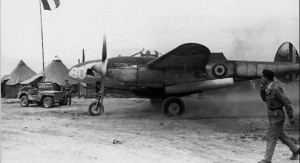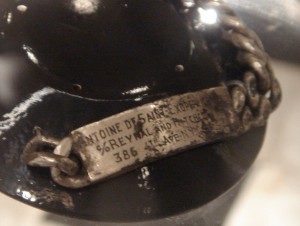Published on July 31, 2012
“Goodbye, said the fox. And now here is my secret, a very simple secret. It is only with the heart that one can see rightly. What is essential is invisible to the eye.”
On this day in aviation history, tragedy struck when the famed author and pilot Antoine de Saint-Exupéry vanished while flying a mission for the Free French Forces in a Lockheed F-5B-1-LO (a recce version of the P-38 Lightning). The year was 1944 and Saint-Exupéry had taken off from Borgo-Porreta, in Bastia, Corsica, to fly over the Mediterranean Sea, doing his duty as part of the French II/33 Squadron.
He would never return.

For many years, the mystery of what happened to Saint-Exupéry remained unsolved. There were many theories — that he had suffered hypoxia at high altitude and crashed in the sea, that his aircraft had malfunctioned, that he had committed suicide in the air while suffering a bout of severe depression, or even that he had been shot down. In fact, a former Luftwaffe fighter pilot claimed to have shot down a Lightning in Free French markings that very day, though others disputed his claims and based on the facts, it appears that he referred to another event the day before.
The Author and Pilot
While many know of Saint-Exupéry for his work The Little Prince, in fact, he was a noted aviation author. Even The Little Prince was drawn from his experiences as a pilot — he wrote the book in the years after crashing in the Saharan desert. He nearly died of dehydration and was lost in hallucinations when found by chance by a wandering Bedouin with his mechanic-navigator, André Prévot, on the sands of the desert. Tellingly, the book begins with a pilot lost in the desert.

A former airmail pilot, Saint-Exupéry had flown his own adventures and pioneered many new routes in the years between the wars. He had traveled the span of Africa and had flown many hours and flights into countless dawns and sunsets. He had flown all of France and much of Europe. He had been places and done things in airplanes that few dared to dream. And it was this experience that perhaps lent his writings the power to so quickly evoke wonder.
“You — you alone will have the stars as no one else has them…. In one of the stars I shall be living. In one of them I shall be laughing. And so it will be as if all the stars were laughing, when you look at the sky at night… You — only you — will have stars that can laugh.” — Antoine de Saint-Exupéry, from The Little Prince.
His books about flying included Courier Sud (the Southern Mail), Vol du Nuit (Night Flight); Terre des hommes (Wind, Sand and Stars); and Pilote de Guerre (Flight to Arras) — all books that have stood the test of time. His prose unrolls as if from a soft and welcoming hand on each page. For many, he is the Ernest K. Gann of France — yet he was also better than that, and vastly different in style. Saint-Exupéry was a unique writer, plain and simple. Thus, when he disappeared, it was a great loss — perhaps more so than any other pilot who volunteered to fly against the Nazis as part of the Free French forces. All of France mourned.

Antoine de Saint-Exupéry’s Final Mission
The first clue of his final crash site came with the discovery off the coast near Marseille in September 1998 of a silver bracelet bearing his name, his wife’s name (Consuelo) and his publisher in America. The bracelet was twisted with a piece of fabric that appeared to be from his flight suit. Subsequently in May 2000, a French diver named Luc Vanrell found the pieces of what was suspected to be his plane spread widely across thousands of square meters of the seabed. Thereafter, in October 2003, the Government of France would launch an expedition to evaluate the crash site, confirming that it was indeed Saint-Exupéry’s plane from a handful of key recovered pieces.
A later analysis of the wreckage revealed that he had not likely been shot down, though it was inconclusive as to what caused his loss. One thing is certain, however — his bravery and commitment to a free France never wavered. While others pilots of his advanced age (at the time of his death, he was 44 years old and in bad health) were comfortable sitting out the war, Antoine de Saint-Exupéry instead volunteered to fly in combat. He was assigned to reconnaissance, a role he had flown at the beginning of the war in 1940 with the French Armée de l’Air. Back then, with the fall of France, he had escaped via Portugal to the USA, where he had used his prolific pen to call on America to enter the war. After spending two years out of Europe, he had petitioned successfully and gained the support of none less than Gen. Eisenhower for his return to flight status and the war.

An Unflagging Determination to the End
Yet he was badly injured from his many crashes over the years. He was not in good health. He could not dress himself in his flight suit without assistance. He could not turn his head to the left due to neck pain. The planes he was flying were vastly more sophisticated and more unforgiving than the older Caudrons and Blochs he had flown previously. Further, he was battling intermittent, but extreme depression. Yet he flew. He would accept nothing less than the right to help in the fight against the Nazis. And in the end, he would go missing.
“A rock pile ceases to be a rock pile the moment a single man contemplates it, bearing within him the image of a cathedral.” — Antoine de Saint-Exupéry, from The Little Prince.
Amazingly, based on the location of the crash site, it could well be that Saint-Exupéry’s body was recovered just a few days after his death. A French woman came forward with the report that she had seen a plane crash around noon and subsequently, the body of the unidentifiable aviator, dressed in the colors of the Free French, was discovered south of Marseille. It received burial at Carqueiranne, France, in September 1944, where it remains to this day.
So on this day we remember the passage of one of the greatest authors of all time, a pioneering aviator and a man of ideals and conviction. Antoine de Saint-Exupéry will always be missed.
One More Bit of Aviation History
Antoine de Saint-Exupéry’s depression verged on suicidal. His only solace was flying with the men of his squadron, who at night would ask him to recite pages from his books. His depression is easily understood, however, because he was the last of the pioneers of his era, men who flew the mail in South America and in Africa, men who pioneered new routes with him in those days. All had died while flying, the last having been shot down while piloting a cargo flight over the Mediterranean. Before his death, Saint-Exupéry would say, “All became nothing but death…. With whom can I share now my memories? No one is left from those days in South America. No one….” It was a sad end for a truly great man.

Great story. Great man.
Another famous reconnaissance pilot that died in an F-5B version of the P-38, was RAD Wing Commander Adrian Warburton. He dissappeared on a flight over Germany in 1944, shot down by a flak battery when he flew too low to get a better photo of the area. It was more than thirty years before his body was found, still inside the plane buried nose down in a farmer’s field.
This is from the English Telegraph…
A German pilot shot down Little Prince author
Rippert said he would not shoot if he knew it was one of his favourite authors
By Henry Samuel in Paris7:01PM GMT 16 Mar 2008
A former German World War II fighter pilot has claimed he shot down French literary hero Antoine de Saint-Exupéry, author of The Little Prince, 63 years after the event.
However, Horst Rippert, 88, said he would have held his fire on July 31, 1944, had he known his victim was one of his favourite authors.
“If I had known it was Saint-Exupéry I would never have shot him down,” said Mr Rippert.
“He knew admirably how to describe the sky, the thoughts and feelings of pilots”, he added.
“His work inspired many of us to take up our vocation.” Saint-Exupéry’s 1942 memoir Pilote de guerre (Flight to War) recounts a terrifying mission above the French town of Arras as the pilot of a reconnaissance plane during the Battle of France in 1940.
Today he is widely considered to be the greatest author-pilot. The Little Prince, a children’s fantasy in the form of a novella, is one of the top 50 best-selling books of all time, and has been translated into 100 languages.
Mr Rippert confessed to the killing his idol after being tracked down by a French diver, Luc Vanrell, and the founder of an organisation researching aircraft shot down during the war, Lino van Gartzen.
Their findings are to be revealed in a book, Saint-Exupery, the last secret, co-written with French journalist Jacques Pradel, to be published in French on March 20, 2008.
“I didn’t target a man who I knew. I shot at an enemy plane that went down. That’s all”, he told the authors.
Mr Rippert said he spotted the author’s twin-tailed Lightning P38 while flying a Messerschmitt Me-109 over the Mediterranean near Toulon, and was amazed it was flying alone.
“He was below me. I saw his markings and manoeuvred myself behind him and shot him down”, said Mr Rippert, who brought down 28 planes during the war, and became a radio sports journalist afterwards.
For decades, mystery shrouded Saint-Exupéry’s disappearance on what was to have been his last mission. He had been serving with a Free French air force reconnaissance squadron based in Corsica when he failed to return from a mission to prepare for the landing of the allies in southern France.
Many believed he had committed suicide. In 1998, a fisherman found inside his fishing nets what was reported to be Saint Saint-Exupéry’s silver chain bracelet. Six years later, a diver – Mr Vanrell – found the wreckage of the plane. Debris from a German Messerschmitt was found in the same area, sparking a search for Luftwaffe pilots that ultimately led to Mr Rippert.
There are other researchers who discount the claim of Horst Rippert having downed Saint-Exupéry. On close review, the claim may have more to do a sensational promotional effort to garner book sales than any real basis in history. German archival records make note of another shoot down of an L-5 Lightning reconnaissance plane on the same date by another pilot in Horst Rippert’s squadron, but make no mention of his claim. Horst Rippel claims that the Germans were embarrassed about the downing of Saint-Exupéry and so purged the records, but since it is apparent that they could not have known which L-5 Lightning was Saint-Exupéry’s it makes no sense that his claim would have been purged, while the other pilot’s claim would be preserved.
US Military radar and communications tracking logged the shootdown of the other aircraft but not of Saint-Exupéry’s plane. German coded messages that were intercepted do not support Horst Rippert’s claim. It seems unlikely, at best, that his claim is valid.